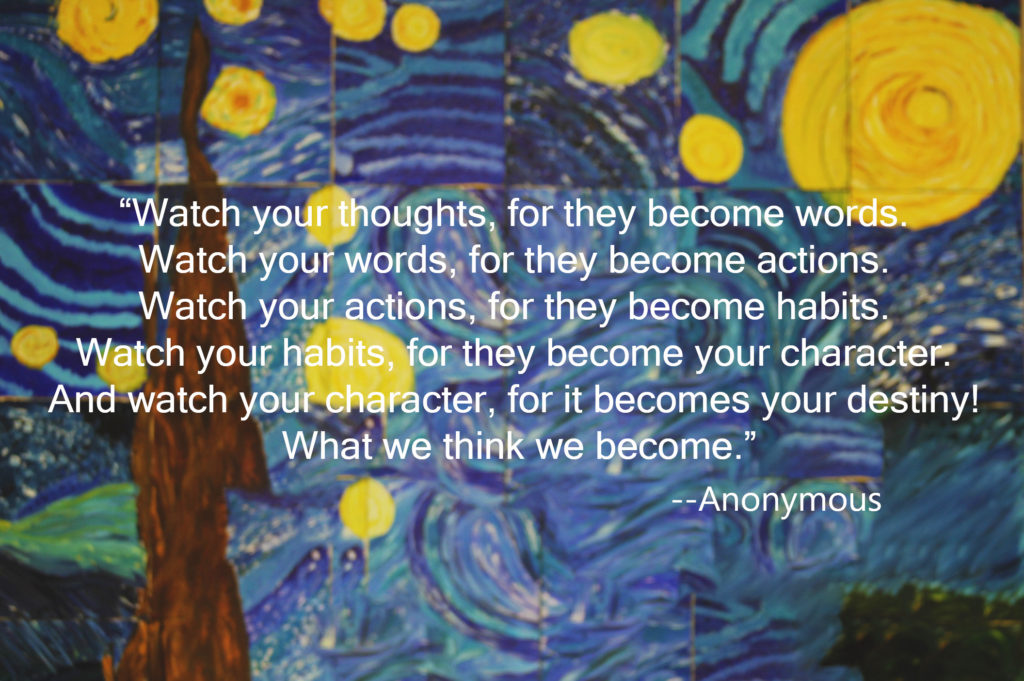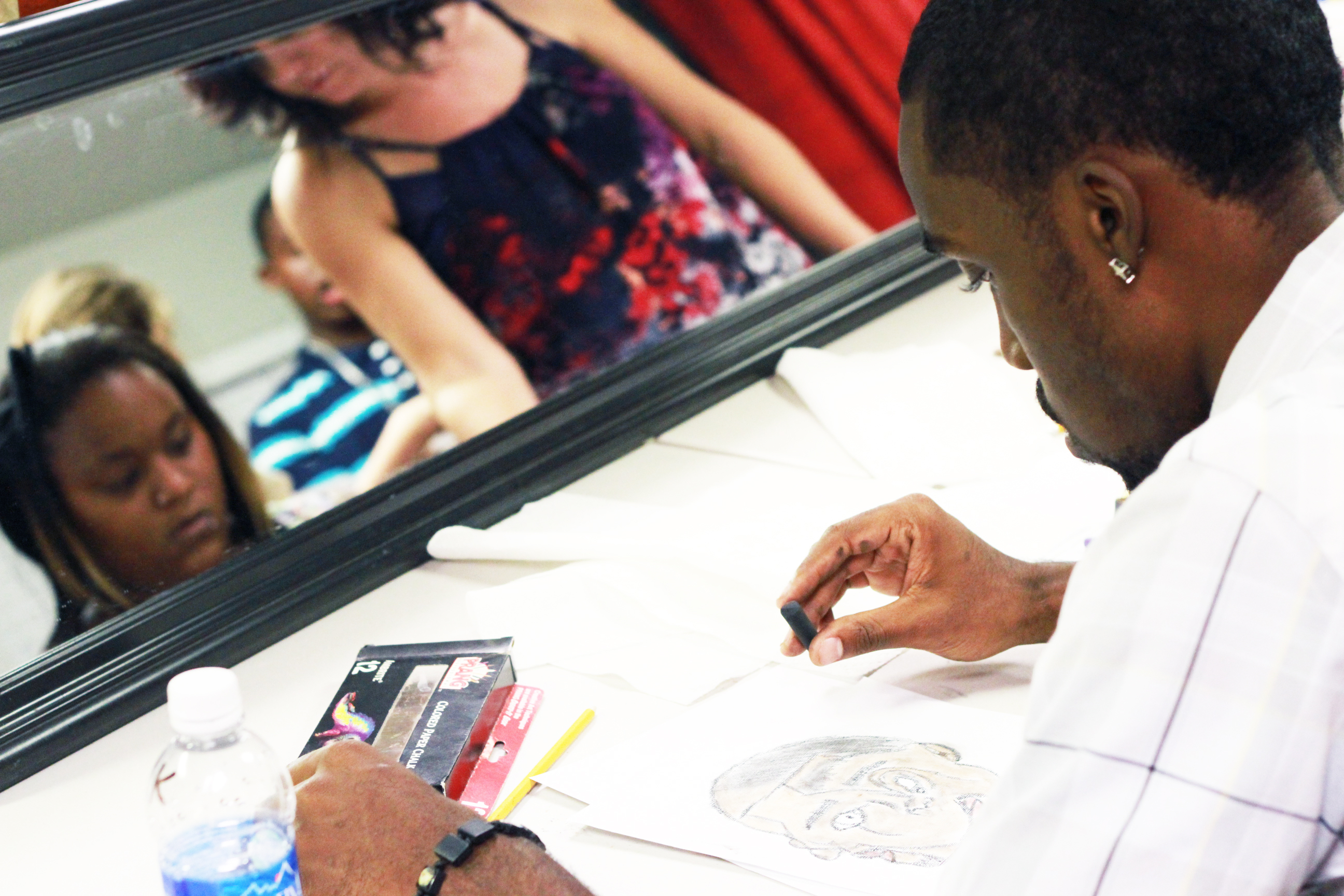
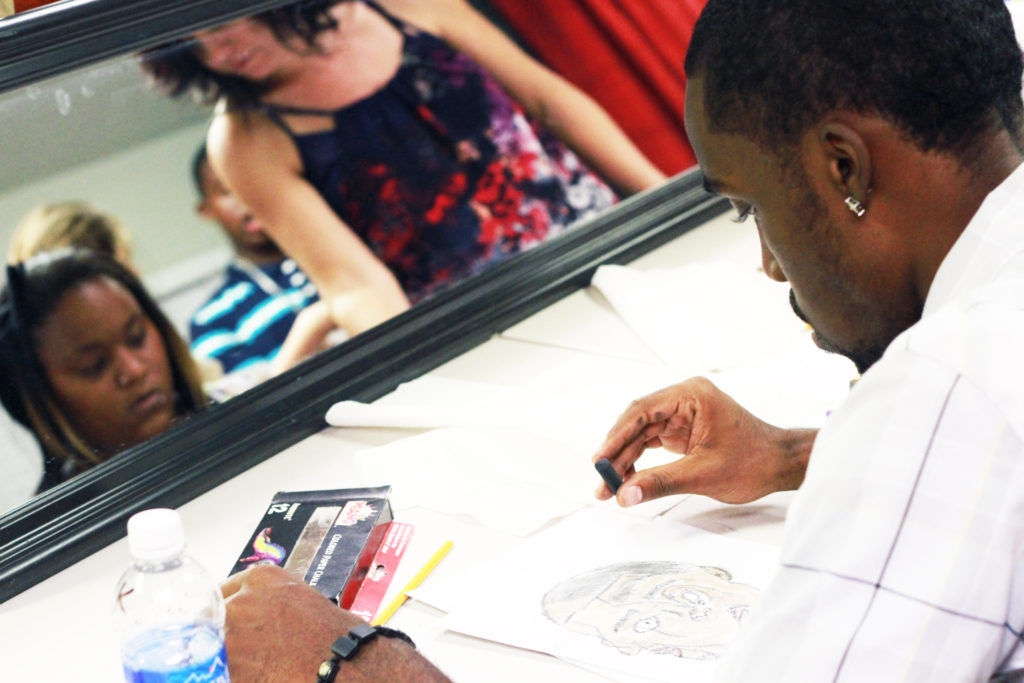
Have you considered what you would like your personal legacy to be like? It’s not something many of us consider seriously. Still, we all create one each day, little by little, whether we realize it or not; it’s not optional. Perhaps one’s desired legacy is related to one’s family, accomplishments, or business. Maybe it’s one’s ideas, art, or influence in society. It may be about how we have helped others in small and large ways. There are so many ways to impact the future both positively and negatively. We tend to think of our legacy as something that happens after we die, but the truth is that we’re building it every day in small ways. The things we do each day are what ultimately form our lasting legacy in the lives of our family, friends, or society.
At Rewritten, we encourage our students to think and plan for the legacy they want to leave and to think about what they do daily as adding to it. They, we, can’t choose what was handed to us, but we can try to choose what to pass along to the future. Since so many of these kids are living out the negative legacies of hurt, abandonment, broken homes, abuse, and addictions, it’s sometimes very difficult for them to see that they can play a gigantic role in revising the way those legacies continue on for themselves and for their futures. Realizing they affect their influence every day can help them to see that it’s really possible to make the positive changes that lead to something better.
One way we think about legacy is by thinking about lasting impacts others have had on us already, and how we can continue what they’ve started for and in us. Today’s a day that reminds us of what one particular person did to help create a positive legacy here. It was one year ago today when we lost a beloved legacy maker to cancer—Tami von Helf, one of our first board members. 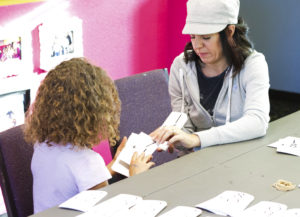 In the early days of Rewritten, even after she knew her cancer had returned, Tami showed up in so many ways for our students, and her life continues to affect their lives and our team. Tami gave so much of her heart, time, and intelligence to our students at the center, on field trips, and often, at her home. She took kids to the Getty Museum; taught math and art classes; had game nights at her house; mentored girls; provided books, food, supplies, and costumes; had parties for kids at her house; hosted holiday and tea parties; painted rooms at the center; helped to plant a learning center garden; and generally loved on the kids. She wanted to leave a positive legacy herself and to help the kids see that they were valuable and able to affect change for the future too. She felt the same way about her family, and in both cases, she tried to work on that legacy each day. She was simply a normal person who cared and acted, and that’s how she left a legacy of love here and at home.
In the early days of Rewritten, even after she knew her cancer had returned, Tami showed up in so many ways for our students, and her life continues to affect their lives and our team. Tami gave so much of her heart, time, and intelligence to our students at the center, on field trips, and often, at her home. She took kids to the Getty Museum; taught math and art classes; had game nights at her house; mentored girls; provided books, food, supplies, and costumes; had parties for kids at her house; hosted holiday and tea parties; painted rooms at the center; helped to plant a learning center garden; and generally loved on the kids. She wanted to leave a positive legacy herself and to help the kids see that they were valuable and able to affect change for the future too. She felt the same way about her family, and in both cases, she tried to work on that legacy each day. She was simply a normal person who cared and acted, and that’s how she left a legacy of love here and at home.
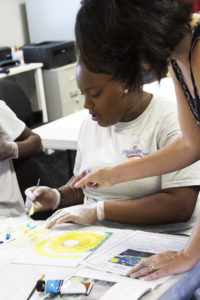 One particular project that seems to symbolize her approach and how it connects with students creating new legacies for their lives is a project she coordinated with them to recreate a new version of Vincent van Gogh’s painting, “Starry Night.” The students were each given one rectangle that was a drawing of part of the larger painting. He or she had to paint the rectangle as well as possible to look like the original. After all of the rectangles were painted, they were reassembled to create the complete picture. The results were interesting and quite stunning. No, they didn’t all match each other perfectly, and no, they weren’t perfectly executed either. Each student had made his or her effort, little by little, to create a beautiful portion of the painting. And they are…beautiful. The parts all work together to create the whole, and not one part is expendable. Each one influences the others because each one is part of the beauty that makes it complete. The little steps create the whole picture.
One particular project that seems to symbolize her approach and how it connects with students creating new legacies for their lives is a project she coordinated with them to recreate a new version of Vincent van Gogh’s painting, “Starry Night.” The students were each given one rectangle that was a drawing of part of the larger painting. He or she had to paint the rectangle as well as possible to look like the original. After all of the rectangles were painted, they were reassembled to create the complete picture. The results were interesting and quite stunning. No, they didn’t all match each other perfectly, and no, they weren’t perfectly executed either. Each student had made his or her effort, little by little, to create a beautiful portion of the painting. And they are…beautiful. The parts all work together to create the whole, and not one part is expendable. Each one influences the others because each one is part of the beauty that makes it complete. The little steps create the whole picture.
This painting serves to remind us of how a beautiful legacy’s created. It’s never executed perfectly. It can’t be affected by only one person; it involves the influence of others. It often needs cooperation and teamwork. It probably entails personal expression and effort. It may require skill. It always happens in increments. In the end, the final product is a group effort, but it’s led by one person with vision and strength to move forward, step by step. Each of our students, we ourselves, and you have the potential to create a positive legacy for those who’ll come after us. Like our group’s, “Starry Night,” we can create something for ourselves and for others that’s better, good, flawed, yet very beautiful. What shall we create?
